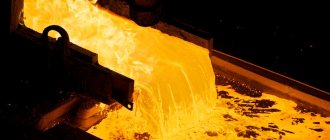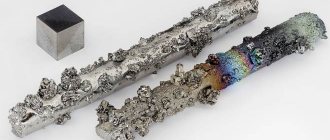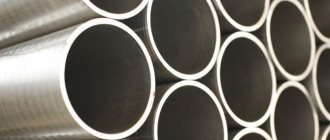What is this?
Kerosene is a flammable mixture consisting of liquid hydrocarbons. The boiling point of kerosene varies between 150-250° Celsius. It is a clear, colorless (in some cases yellowish) liquid, slightly oily to the touch.
The word itself comes from English. kerosene. In turn, it has Greek roots: κηρός - “wax”.
Kerosene is obtained by direct distillation or ratification of petroleum. Sometimes - through its recycling. In some cases, the product is hydrotreated.
Solvent viscosity
Solvents are chemical compounds capable of converting various substances into a solution (a homogeneous homogeneous system consisting of 2 or more components). They are usually used as a medium for carrying out chemical reactions for technological purposes. In this regard, solvents are in demand in various fields of production (paint and varnish, electrical engineering, pharmaceuticals, perfumes, the creation of explosives), and agriculture.
Solvents are classified into organic and inorganic (the most important of them is water). According to the degree of viscosity, they are divided into low-viscosity (up to 0.002 Pa•s), medium-viscosity (0.002–0.01 Pa•s), and high-viscosity (over 0.01 Pa•s).
Solvents in industry are pumped using different types of pumps, for example, membrane, vortex, plunger devices.
Acetone viscosity
Acetone belongs to the group of low-viscosity solvents. It is a colorless volatile liquid of organic origin, characterized by a characteristic pungent odor. The viscosity of the product is 0.000 33 Pa•s.
Kerosene viscosity
The kerosene solvent also has a low viscosity (0.001 49 Pa•s at room temperature). This is a transparent substance with an oily structure, transparent or yellowish. Kerosene is obtained by direct distillation of oil.
This substance is also used for other purposes: as jet fuel in rockets and airplanes, as fuel for household lighting, in glass and porcelain firing, and in metal cutting equipment.
Composition of the substance
We figured out the boiling point of kerosene. Now let's imagine the composition of this product. It is not universal and standard, since it depends on the raw material - oil, its processing method and chemical composition.
So, the composition of kerosene according to GOST:
- Aliphatic saturated hydrocarbons - 20-60% of the total mass.
- Naphthenic hydrocarbons - 20-50%.
- Aromatic bicyclic hydrocarbons - 5-25%.
- Unsaturated hydrocarbons - up to 2%.
- Insignificant content of impurities - sulfur, oxygen or nitrogen.
Let us now imagine the most important properties of this substance.
Chemical properties of kerosene
Kerosene - the chemical properties of the fuel, such as volatility and flammability, depend on the composition of the raw material and the type of its processing. The concentration of aromatic hydrocarbons is different, which led to the following kerosene groups:
- Aviation. In turn, it is divided into jet (RT) and aircraft (TS-1) fuel. Used to lubricate fuel systems in engines of various aircraft. The refrigerant also plays a role. Has increased thermal oxidation and combustion mark. Characterized by stability and resistance to low temperatures.
- Technical. All tolerances are regulated by GOST “Kerosene for technical purposes” 18499-73. Grades KT-1 and KT-2 replace solvents or cleaners for washing components and spare parts of vehicles, equipment and mechanisms.
- Lighting. Types KO-25, 25 or 30 are used to refill kerosene lamps. Some types of fuel are used to impregnate tanned leather. Among the advantages is the absence of soot and soot during combustion.
Important technical characteristics of kerosene include increased volatility. The vapor content in the air up to 300 mg/m 3 is not dangerous to humans. When working with fuel, it is also necessary to take into account its high level of flammability - combustion at t° 57°C, self-ignition at t° 216°C.
Kerosene is often used to wash mechanisms and remove rust.
If you need kerosene, you can find out the characteristics of various types from the specialists of TC AMOX. The optimal option will be selected based on the purpose of application
Pay attention to the fuel catalog, which presents common types of kerosene, diesel fuel, gasoline and fuels and lubricants. Call us, we will answer all your questions!
Kinematic viscosity
When characterizing kerosene according to GOST, this position will also be relevant. It must be said that the viscosity of the hydrocarbons included in this product changes significantly with a decrease/increase in its temperature. The higher the latter is, the lower the viscosity becomes.
This is a very important characteristic. The viscosity of kerosene has a great influence on a number of operational features of aircraft fuel systems, as well as combustion and mixture formation processes in the engine.
Thus, the viscosity of kerosene at 20 °C is 1.2 - 4.5 mm2/s.
Basic thermophysical characteristics of kerosene
Kerosene is the middle distillate of the petroleum refining process, defined as the fraction of crude oil that boils at a temperature between 145 and 300°C. Kerosene can be produced by distilling crude oil (straight-run kerosene) or from cracking heavier petroleum streams (cracking kerosene).
Crude kerosene has properties that make it suitable for blending with a variety of performance additives for use in a variety of commercial applications, including transportation fuels. Kerosene is a complex mixture of branched and straight chain compounds that can generally be divided into three classes: paraffins (55.2% by weight), naphthenes (40.9%) and aromatics (3.9%).
To be effective, all grades of kerosene must have the highest possible specific heat of combustion and specific heat capacity, and also be characterized by a fairly wide range of ignition temperatures. For different groups of kerosenes these indicators are:
- Specific heat of combustion, kJ/kg - 43000±1000.
- Self-ignition temperature, 0C, not lower than – 215.
- Specific heat capacity of kerosene at room temperature, J/kg K – 2000…2020.
It is impossible to accurately determine most of the thermophysical parameters of kerosene, since the product itself does not have a constant chemical composition and is determined by the characteristics of the original oil. In addition, the density and viscosity of kerosene depends on external temperatures. It is only known that as the temperature approaches the zone of stable combustion of the petroleum product, the specific heat capacity of kerosene increases significantly: at 2000C it is already 2900 J/kg K, and at 2700C it is 3260 J/kg K. Accordingly, the kinematic viscosity decreases. The combination of these parameters determines good and stable ignition of kerosene.
Density
One of the most important characteristics used for all petroleum products. And if we compare the density of kerosene and water, we will see that the latter will be higher. Here are the specific numbers:
- The density of distilled water at an “ideal” temperature of 3.7 °C is 1000 kg/m3.
- The density of sea water at an “ideal” temperature of 3.7 °C is 1030 kg/m3.
- The density of boiling water at 100 °C is 958.4 kg/m3.
To further compare the density of water and kerosene, let’s get acquainted with this characteristic regarding the petroleum product. This is 800 kg/m3.
It must be said that in the early stages of the development of the oil industry, density was the only characteristic of kerosene. Today, in practice, the quantity most often used is relative density. This is a dimensionless indicator equal to the ratio of the true densities of a given petroleum product and distilled water, taken for comparison at certain temperatures.
Thus, the density of kerosene at 20 °C will be from 780 to 850 kg/m3.
Flash point
The next characteristic after the boiling point of kerosene is the flash point. This is a parameter that determines the degree of fire hazard of a given liquid. Here the flash point of kerosene will vary from 28 to 60 °C.
It must be said that this characteristic is strictly controlled by standards to prevent gasoline from entering the fuel, which can dramatically increase its flammability. The practical determination of the temperature of reactive flashes of kerosene liquid is prescribed by the standards of all countries of the world.
Auto-ignition temperature
Next up is another thermal indicator - the ignition temperature of kerosene. This characteristic should be understood as the ignition of the steam-air mixture, which leads to combustion. However, ignition of vapors will not always be a sufficient condition for stable combustion of kerosene.
The auto-ignition temperature is the lowest temperature at which petroleum product vapors together with air can ignite without the presence of an ignition source. By the way, the functioning of diesel internal combustion engines is based on this remarkable property.
Self-ignition of kerosene will occur at a temperature of 300 °C.
Main indicators of the physical properties of kerosene
Suppliers of fuel for various needs are leading petrochemical companies. Often the supply is carried out by private industries working in the direction of unique developments. When forming industrial reserves, a number of characteristics and properties of kerosene are taken into account. Physical parameters are most often studied in combination with chemical formulas. In this regard, the following mixed properties are distinguished:
- Density;
- Viscosity;
- Heat released during combustion;
- Flash points, boiling points;
- Liquid color. It happens without color, yellowish or light brown tint;
- Chemical composition. Depends on the raw materials;
- Concentration limit of ignition. By analogy with natural gas, the volume of a substance in nearby air mixed with kerosene vapor is studied;
- Acidity
Kerosene density
This physical quantity directly depends on the temperature of the liquid. To compile a density table, measurements are taken at various degrees of heating of the sample taken for research. An increase in the parameter is achieved through the use of various production technologies and increasing the content of heavy hydrocarbons. When heated, a direct dependence of density is observed; it begins to decrease. For example, at a temperature of 20 degrees, the density is at the level of 819 kg/m3, then rushes to a value of 618 kg/m3 when heated to 270 degrees. This property should be taken into account in practical applications. The initial density of the substance is less than water, which is why almost all oil derivatives form a continuous film on the surface of reservoirs.
Approximate properties depending on where kerosene is used:
- Aviation brands TS-1 -780 kg/m3, TS-2 – 766 kg/m3;
- Lighting – 840 kg/m3.
Kinematic viscosity of kerosene
In practice, this indicator is obtained by calculation. The initial data for calculations are density and dynamic viscosity. The parameter is used to determine the lubricating properties of a substance when used as a technical fluid in industry and aviation. The kinematic viscosity indicator is taken into account when filling storage tanks, tanks, reservoirs and other types of containers.
The parameter remains directly dependent on the degree of heating, the initial value is taken as 1.819·10-6 m2/s, maintained at a temperature of 20 degrees. Kinematic viscosity decreases less actively than dynamic viscosity (in a ratio of 4.8 versus 5.7).
Flash point of kerosene
This parameter is often studied as the flammability of a liquid. By definition, this is the starting temperature at which vapors above the tank (container, pipeline) ignite. However, the flash level does not indicate detonation of the entire volume of kerosene used. The initial parameter used for industrial supply purposes is 28 degrees. If there is a downward deviation from this parameter, fuel is not allowed for sale. In practice, active ignition of kerosene occurs when heated (for example, with compressed air) to 300 degrees. In this case, the flash point takes into account unauthorized fire (from extraneous sources).
Heat from burning kerosene
The starting value is 43 MJ per kg of fuel. The parameter is taken into account when burning raw materials for space heating. The level of influence on adjacent mechanisms during active combustion of fuel in jet engines is also being studied.
GNP
This abbreviation refers to the height of the non-smoking flame of the petroleum product. In particular, this is an important characteristic for KO-25 kerosene. Determines its ability to burn in a standard wick lamp (with a wick diameter of 6 mm) with a white, uniform flame without the formation of soot or soot.
This is a numerical indicator measured in millimeters. It must be indicated on the labels of the corresponding lighting brands of the product. GNP is directly influenced by the chemical and fractional compositions of kerosene.
Contrast flammability limit
CPV is another significant characteristic of kerosene. This is the name of the ratio of the area of ignition of petroleum product vapor and the concentration range of this flammable substance, which is evenly distributed in the oxidizing environment (most often in the air). Within the boundaries of the latter, the substance can ignite from ignition sources and spread its independent combustion throughout the mixture.
The CPV of kerosene will be equal to 1.2-8.0% of the volume of the substance.
Application of the substance
The fuel we know best is kerosene. The petroleum product is used as jet fuel in rockets and aircraft. This is also a well-known fuel used in firing porcelain and glass products. Kerosene is also produced for household lighting and heating devices. Used for metal cutting machines. It is also a solvent (for example, for applying pesticides), a raw material in oil refining.
Kerosene can actually be used as a substitute for Arctic and winter fuel. But in this case, it is not an equivalent alternative - it is necessary to add cetane-increasing and anti-wear additives. For multi-fuel engines (based on a diesel engine), it is possible to use pure kerosene, but only for a short time.
In winter, it will be acceptable to add 20% kerosene to summer diesel fuel in order to reduce the pour point of the latter. In this case, performance characteristics will not suffer.
As for the entertainment sector, here it is kerosene that acts as the main fuel when holding various fire shows (performances with the “participation” of fire). This is facilitated by its excellent absorbency and relatively low combustion temperature. In everyday life, kerosene is known to be used as a means to remove rust and wash various mechanisms.
Sequence for determining the specific heat of combustion
The indicator of the specific heat of combustion of kerosene establishes the conditions for its ignition in various devices - from engines to kerosene cutting devices. In the first case, the optimal combination of thermophysical parameters should be determined more carefully. There are usually several schedules for each fuel combination. These graphs can be used to evaluate:
- Optimal ratio of mixture of combustion products.
- Adiabatic flame temperature of combustion reaction.
- Average molecular weight of combustion products.
- Specific heat ratio of combustion products.
This data is necessary to determine the speed of the exhaust gases emitted from the engine, which in turn determines the engine's thrust.
The optimal fuel mixture ratio gives the highest specific impulse of energy and is a function of the pressure at which the engine will operate. An engine with high combustion chamber pressure and low exhaust pressure will have the highest optimum mixture ratio. In turn, the pressure in the combustion chamber and the energy intensity of kerosene fuel depend on the optimal mixture ratio.
In most engine designs using kerosene as fuel, much attention is paid to the conditions of adiabatic compression, when the pressure and volume occupied by the combustible mixture are in constant relationship - this affects the durability of engine elements. In this case, as is known, there is no external heat transfer, which determines the maximum efficiency.
The specific heat of kerosene is the amount of heat required to raise the temperature of one gram of a substance by one degree Celsius. The specific heat coefficient is the ratio of the specific heat capacity at constant pressure to the specific heat capacity at constant volume. The optimal ratio is established at a predetermined fuel pressure in the combustion chamber.
The exact heat indicators for the combustion of kerosene are usually not established, since this petroleum product is a mixture of four hydrocarbons: dodecane (C12H26), tridecane (C13H28), tetradecane (C14H30) and pentadecane (C15H32). Even within one batch of original oil, the percentage of the listed components is not constant. Therefore, the thermophysical characteristics of kerosene are always calculated with known simplifications and assumptions.
Main areas of use
In conclusion, we present the most common areas of use of the substance:
- Aviation kerosene. This is the name of motor fuel for gas turbine engines, which are equipped with various aircraft. These are kerosene fractions of direct distillation of oil. They are often hydrotreated and additives are added to improve performance properties. In Russia, five varieties of such fuel are produced for subsonic aviation - TS-1, T-1, T-1S, T-2 and RT, and for supersonic aviation - two (T-6 and T-8V).
- Rocket kerosene. Here this petroleum product acts as a hydrocarbon, environmentally friendly fuel and the working fluid of hydraulic machines. Its use in rocket engines was proposed back in 1914 by Tsiolkovsky. Paired with liquid oxygen, it is used in the lower stages of many launch vehicles.
- Technical kerosene. This is a raw material for the production of aromatic hydrocarbons, ethylene, propylene. In addition, it is the main fuel for firing porcelain and glass, and a solvent for washing parts and mechanisms.
- Lighting kerosene (KO-25, KO-30, KO-20, KO-22). It is used in lighting fixtures and is used as fuel for some kitchen stoves (kerosene stoves, kerosene stoves, kerosene gas). Another use is in heating. This is a solvent, a cleaning agent (widely used to remove residues of thermal pastes, various paints and varnishes), and a degreaser.
- Automotive kerosene. This application was characteristic of the dawn of the development of internal combustion engines. The petroleum product was widely used as fuel for carburetor and diesel internal combustion engines.
Among the non-trivial uses, the following can be distinguished: a folk remedy for getting rid of lice, treating head lice and diphtheria. In addition, kerosene helped get rid of bedbugs when wiping furniture with it.
As you have seen, kerosene immediately determines a complex of characteristics. And this seems natural given its multiple uses.
The difference between kerosene and gasoline
The method for producing aviation kerosene is direct distillation of low-sulfur and sulfur oil. To improve the physicochemical properties of kerosene, various additives and hydrotreating are used. Kerosene has a number of advantages over gasoline:
- high heat of combustion (both mass and volumetric);
- low volatility;
- lower freezing point;
- low kinematic viscosity.
- In addition, kerosene is less fire hazardous than gasoline.
A significant advantage in using kerosene is its breadth of application. In addition to fuel for jet power plants, it is used on board as a coolant or coolant for radiators. To control the cross-section of the engine nozzle, a hydraulic system is used, the working fluid of which can also be kerosene. Needless to say, this type of fuel is an excellent solvent.
This is extremely important when organizing the maintenance process of jet aircraft engines.
Interesting: Why don't the Chinese drink milk? Reasons, photos and videos









